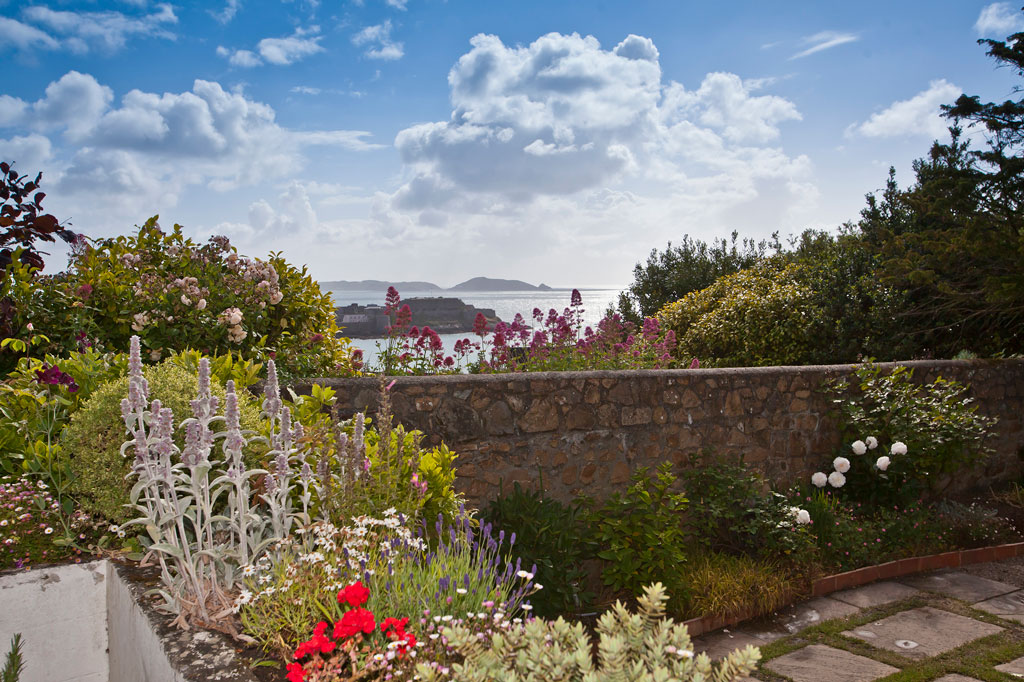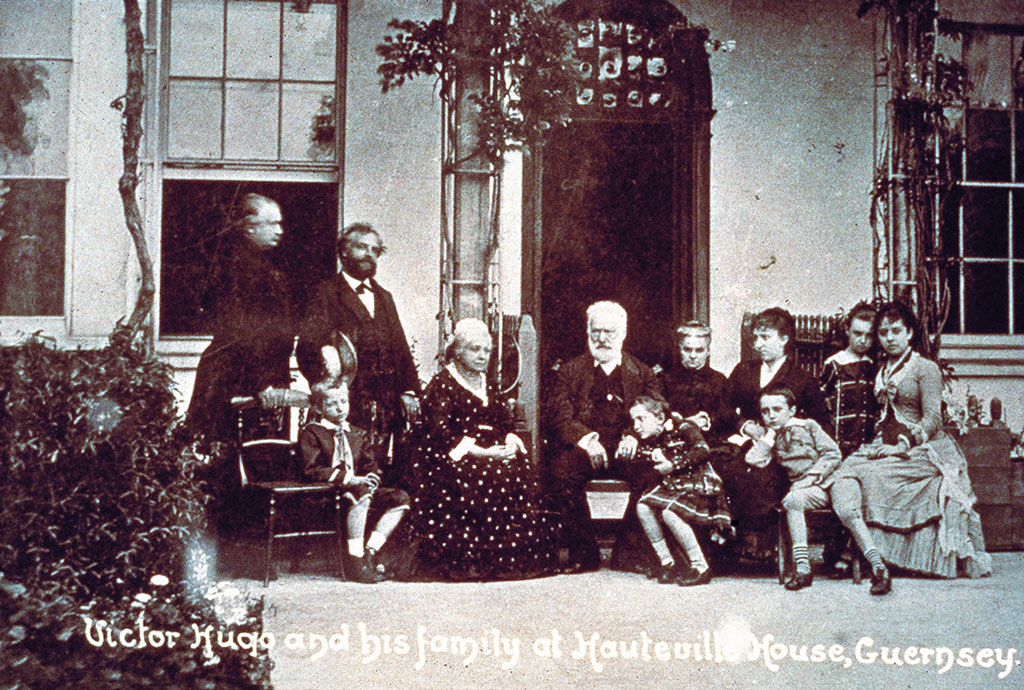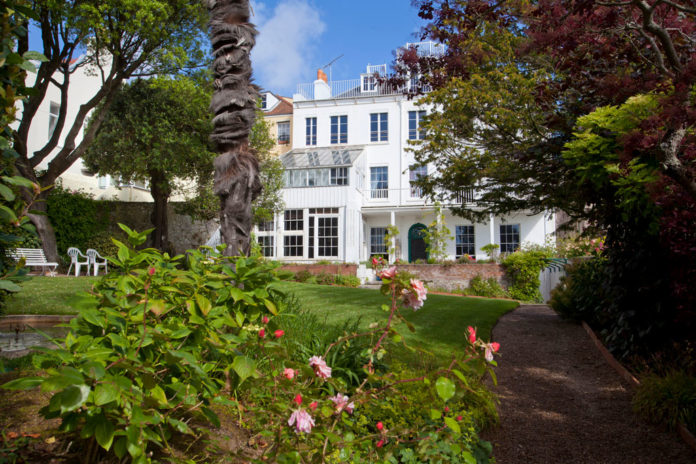The bold, eccentric decor of Victor Hugo’s Guernsey home speaks volumes about he poet’s world and his works.
On 31 October 1855 the poet, playwright and novelist Victor Hugo arrived in windswept Guernsey, in desperate search of exile. Banished from his native France for aggravating Napoleon III with his outspoken republican views, he had wandered “from coast to coast on foreign soil” for four long years, sleeping in hotel rooms, train carriages and boat cabins.
Guernsey, a little island in the English Channel and a British dependency, was a safe haven, though Hugo’s arrival was unpromising: his unfinished manuscript of Les Misérables had almost been tossed overboard during a stormy crossing from neighbouring Jersey. But Guernsey, a “rock of hospitality and liberty”, offered the welcome he yearned for.
Hauteville House, a handsome villa in the island’s capital, St Peter Port, put an end to the poet’s wanderings. He quickly put down roots, moving his family in – his wife, Adèle, sons Charles and François-Victor and daughter Adèle – and installing his long-term mistress, Juliette Drouet, a few doors down the street.

Although aggrieved by his exile, Hugo was galvanised by his foreign surroundings. Now in his mid-50s, he was more productive than he had ever been. “A month’s work here is worth a year in Paris,” he wrote to a friend.
After a morning spent writing, in the afternoons the poet would stride forth from St Peter Port’s cobbled streets to explore the wild cliff-edged coastline. He often swam in the jade-green waters of Fermain Bay or, closer to home, little Havelet Beach, guarded by Castle Cornet, Guernsey’s ancient fortress.
He poured his new-found creative energies into the decoration of his home, scouring the island’s antiques shops and taking home armfuls of French tapestries, Turkish carpets, Chinese silks and Delft tiles. He hired local craftsmen, sketching out outlandish designs for them to follow.
Hugo’s conflicted feelings about his exile are writ large across every inch of the house, now owned by the City of Paris and recently restored to its former glory. Stepping inside, you are plunged into the poet’s world; in the words of his son Charles, Hauteville House is
an “autograph on three floors and a poem in several rooms”. Hugo’s decorative style is the polar opposite of minimalism. Not an inch of plain painted wall can be seen anywhere; every surface – walls, ceilings and floors – is a riot of carved wood, printed tiles and tapestries. Secret doors are concealed in tapestried walls, and cryptic messages are etched into the woodwork, designed to intrigue visitors and, above all, to make them think.
The Entrance Hall is a paean to Hugo’s Romantic masterpiece, Notre-Dame de Paris: a dimly-lit Gothic cathedral in miniature, with expanses of carved dark wood and a crypt-like calm.

In the Billiard Room next door, family sketches, photographs and portraits line the walls, including that of Hugo’s daughter Léopoldine, who drowned in the Seine aged 19. Poignant references to her are dotted throughout the house.
The poet carved messages into the furniture, much as a prisoner etches his initials into the walls of his cell. Ave (‘Hello’) makes a cheery greeting in the entrance-hall woodwork. Exilium vita est (‘Life is an exile’) is carved above the doorway of the Dining Room, while
a giant double ‘H’ (for Hugo and Hauteville) in Delft tiles dominates the fireplace.
Hugo was a man not known for his modesty; his self-created motto Ego Hugo is emblazoned across many of the furnishings.
Elsewhere, the ‘meaning’ of the decor – there is always a meaning – is more obscure. In the Tapestry Room that overlooks the pretty garden, Aubusson tapestries were cut to fit the space perfectly, the wraparound pastoral scenes paying tribute to the omnipresence of nature in Hugo’s works.

Hugo envisioned the ‘journey’ through the house as a progression from darkness into light. As you ascend the floors the prison-like gloom of the ground floor gives way to the startling brightness of the upper rooms.
The interconnecting Red and Blue rooms on the first floor sparkle like a jewellery box. Gone is the heavy dark wood, replaced by gilding, chinoiserie, damask and lacquerware. The dazzling decor and curated objets here recall Hugo’s theatrical Parisian apartment. He had long been involved in creating stage sets for his plays, and it shows.
There’s more stage-set chutzpah on display in the second-floor Oak Gallery. Renaissance and Gothic elements, Biblical and political references combine to create a disquieting space that was conceived as a bedroom, but became something else entirely. The monumental four-poster at one end seems more like an altar. The little skull on the headboard was a memento mori given to the poet the year his daughter died. At the other end of the room, a carved table flanked by three chairs appears set for Judgment Day.
It’s a relief to escape to the light at the very top of the house. The glass-walled ‘Lookout’ was designed by Hugo as a studio. The poet wrote here standing up, finally completing Les Misérables, an epic 20-year effort. He was inspired, no doubt, by the breathtaking view of the islands of Sark and Herm and, on a fine day, his homeland. “Any place for dreaming is good,” he wrote, “provided that it’s in an obscure corner and the horizon is vast.”
Despite fears that his “present refuge” would become his “probable tomb”, after 19 years in exile Hugo returned to his beloved France in 1870 and was welcomed back as a national hero. Finally free to roam as he chose, he returned several times to Guernsey, where the life of an exile had unexpectedly gifted him freedom of a different kind.
Getting there
Aurigny flies to Guernsey from London Gatwick (1hr 15min) and other UK airports. Alternatively, Condor Ferries operate a service from Poole (3hr) and Portsmouth (7hr). www.aurigny.com; www.condorferries.co.uk
Where to stay
La Grande Mare is a comfortable hotel on the west coast, overlooking Guernsey’s largest sandy beach, Vazon Bay, and surrounded by landscaped gardens. In St Peter Port, the Old Government House is a luxury boutique hotel with bags of old-world charm. www.lagrandemare.com; www.theoghhotel.com
Where to eat
Fermain Beach Café has freshly caught seafood on the menu, and a view of the bay that was one of Hugo’s favourites. The Swan Inn in St Peter Port offers tasty gastropub fare; pies are a speciality. fermainbeachcafe.gg
Hauteville House
The house is open daily except Wednesdays from April to September. Entrance is by prebooked guided tour only (email hugohouse@cwgsy.net).






 © 2024
© 2024